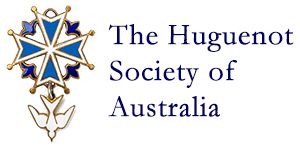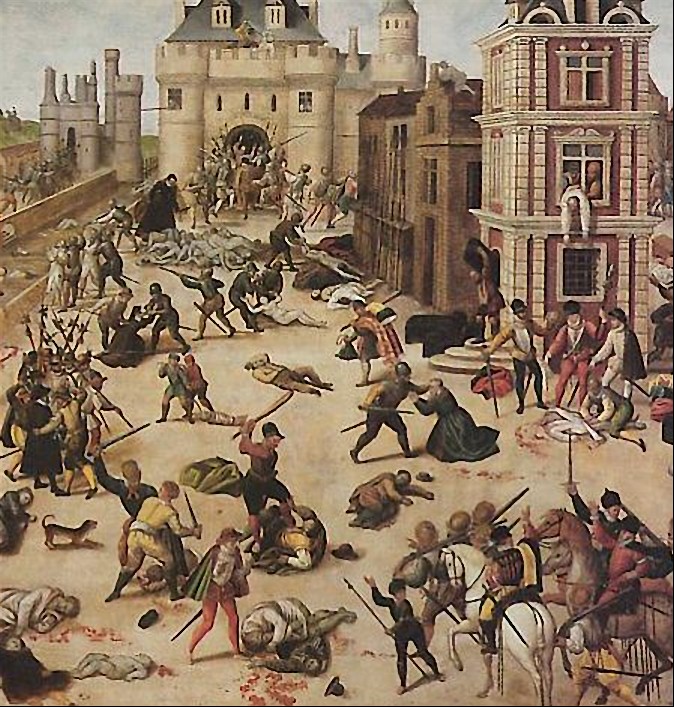
|
What were Huguenots? French Protestants in the 16 century were known as Huguenots, part of a Christian movement in Europe known as the Reformation. The Papacy added many practices that were not in the Bible so many people protested, especially against indulgences. Martin Luther protested by writing Ninety Five Theses in 1517 rejected by the Papacy. The Reformation caused a split with the Roman Catholic Church. Frenchman John Calvin (Jean Cauvin) wrote Institutes of the Christian Religion in 1536 that led to Calvinism a form of Protestantism. Working from exile in Geneva, he supplied the new church with its theology and its form of organisation. One of the earliest documented use of Huguenot was used in 1550 court cases against "heretics" (dissenters from the Roman Catholic Church). French Protestantism was never more than 10% of the population of France. Bitter religious wars caused great harm and suffering between 1559 and 1598. In 1572 thousands of Huguenots were massacred in the St Bartholomew massacre in Paris. After the fall of the Huguenot stronghold of La Rochelle in 1629, the Huguenots settled down as law-abiding citizens of France. Hoping to enjoy the civic and religious freedoms promised them by Henry IV originally a Protestant when he issued the Edict of Nantes in 1598 Unfortunately the Roman Catholic church did everything it could to undermine the Edict and its guarantees of Protestant freedoms. In the 1680's Louis XIV was determined to force them all to become Catholics. In 1685 he revoked the Edict of Nantes, and forced a quarter of the Huguenots into exile. |
Those who remained were made Catholic, whether they liked it or not. However the Protestants of France maintained their faith in secret, despite vicious persecution, and still exist today Huguenots chose exile in more friendly countries during a long period (probably around 1550-1750) but the main decade of exile was the 1680's when approximately 250,000 people fled France. It was at this time that the word refugee came into the English language. They went to any country that would take them, allow them religious freedom and the chance to work to support themselves and their families. The principal places of refuge were the Netherlands, England, Germany, Switzerland and Ireland, although some refugees spread to as far away as Russia, Scandinavia, the American colonies, and South Africa. Everywhere they went they brought with them their religion, their considerable artistic and industrial skills, and their habits of hard work and civic responsibility. They made good citizens and their loss was a great blow to France. Although no Huguenot refugees ever came directly to Australia, many of the descendants of these people have come here, and have contributed much to the country's development. They came principally from England and Ireland, and were here from the beginning of European settlement: Jacob Bellet, a Huguenot silkweaver, was on the First Fleet, and Capt Edward Riou was in charge of HMS Guardian in the Second Fleet when it struck an iceberg in 1789. In later years Huguenot descendants have come to Australia from many countries, including France, Germany, Switzerland, the Netherlands, the Channel Islands, South Africa, and even from more unexpected places like Jamaica, India and Sri Lanka. |
JOHN CALVIN was a French Protestant who published his Institutio Christianae Religionis in 1536. He was particularly well supported by Protestants in Switzerland, France, Scotland and the Netherlands. Known later on as HUGUENOTS, the French Protestants were joined by the French Waldensians in 1562. The origin of the name Huguenot is uncertain, but dates from approximately 1550 when it was used in court cases against "heretics" (dissenters from the Roman Catholic Church). There is a theory that it is derived from the personal name of Besançon Hugues, the leader of the "Confederate Party" in Geneva, in combination with a Frankish corruption of the German word for conspirator or confederate: eidgenosse. Thus, Hugues plus eidgenot becomes Huguenot, with the intention of associating the Protestant cause with some very unpopular politics. O.I.A. Roche, in his book The Days of the Upright, a History of the Huguenots, writes that "Huguenot" is "a combination of a Flemish and a German word. In the Flemish corner of France, Bible students who gathered in each other's houses to study secretly were called Huisgenooten, or "house fellows," while on the Swiss and German borders they were termed Eidgenossen, or "oath fellows," that is, persons bound to each other by an oath. Gallicized into "Huguenot," often used deprecatingly, the word became, during two and a half centuries of terror and triumph, a badge of enduring honor and courage." As nickname and even abusive name it's use was banned in the regulations of the Edict of Nantes which Henry IV (Henry of Navarre, who himself earlier was a Huguenot) issued in 1598. The French Protestants themselves preferred to refer to themselves as "réformees" (reformers) rather than "Huguenots". It was much later that the name "Huguenot" became an honorary one of which their descendants are proud. |

Copyright The Huguenot Society of Australia 2016